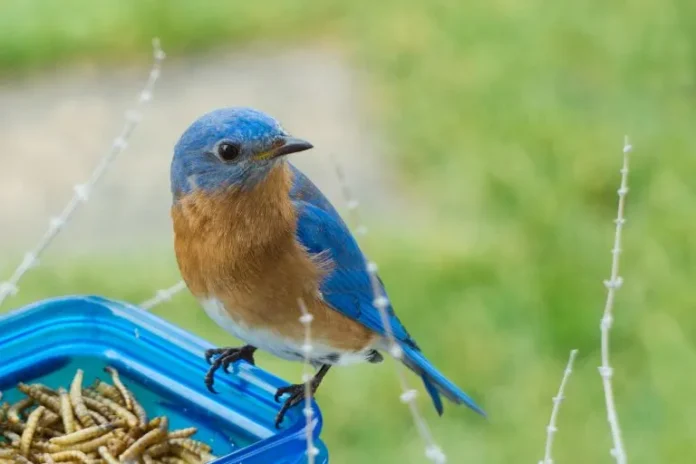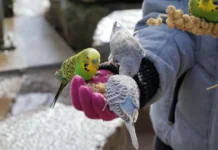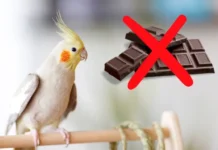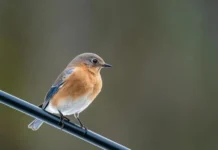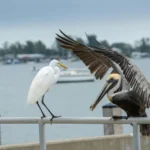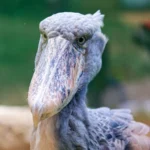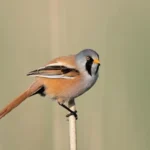Table of Contents
Bluebirds are cherished across the United States, and providing them with the right food is essential for their survival. A balanced diet plays a crucial role in maintaining their health and well-being.
Understanding their nutritional needs is crucial for anyone wanting to attract them. By offering the right food, we help these beautiful birds thrive. They are known for their stunning blue and orange feathers.
Bluebirds have unique dietary needs that require careful attention. The right food is essential for their health. In this article, we’ll explore the best food choices for bluebirds. We’ll also share insights into these fascinating birds, including the blue and orange species found in the United States.
Identifying Your Backyard Bluebirds
To attract and care for bluebirds, knowing the different species is key. Identifying them is both fun and important. For example, the Eastern Bluebird has a brown chest. Learning about these birds helps you provide the right food and care.
It’s important to know which bluebirds might visit your yard. The Eastern Bluebird is common, with its brown chest. The Western Bluebird has a unique call. Knowing these differences helps you make your yard bluebird-friendly.
• Eastern Bluebird Characteristics
The Eastern Bluebird stands out with its blue and orange feathers and brown chest. You’ll find them in open woods and yards with short grass. Recognizing these traits helps you care for the bluebirds in your yard.
• Western Bluebird Identification
The Western Bluebird is known for its short, melodic call. They live in open areas with little vegetation. Their call is a key way to spot them in the western U.S.
• Mountain Bluebird Features
The Mountain Bluebird shines with its bright blue feathers and no brown chest markings. They prefer open areas with short grass, often in mountains. Knowing each species’ unique features helps you create a welcoming space for them.
Natural Diet of Bluebirds in the Wild
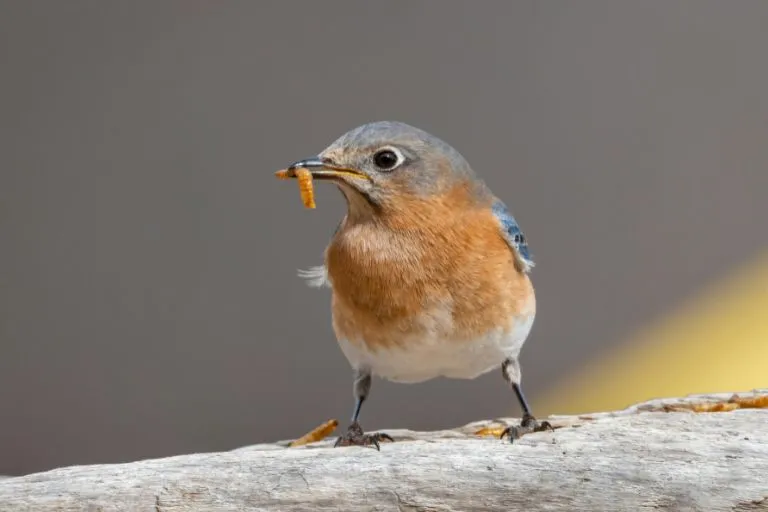
Knowing what bluebirds eat in the wild is key for backyard bird lovers. Bluebirds mainly eat insects, spiders, and small fruits. They search for these in open spaces like meadows and woodland edges.
Bluebirds enjoy a variety of insects, including grasshoppers and mealworms. They also munch on spiders and small invertebrates. Plus, they love small fruits like berries and cherries, which give them energy and nutrients.
It’s tough to mimic their diet in backyards, but it’s doable. Offering insects, fruits, and berries can attract bluebirds. This helps them stay healthy, whether in the wild or in your yard.
By knowing what bluebirds eat and offering the right food, we can help them thrive. This is crucial for those in the wild, where food can be hard to find. By providing a natural diet, we can attract and support these beautiful birds.
Essential Bluebird Food Options for Your Feeder
Attracting bluebirds to your yard starts with the right food. A feeder for bluebirds is a great way to offer them a steady diet. Mealworms are a top choice because they’re full of protein, perfect for bluebirds, especially when they’re breeding.
Bluebirds also love berries and fruits. You can give them fresh or dried ones in a feeder or on a tray. Blueberries, raspberries, and blackberries are favorites. They also enjoy commercial bluebird feed mixes, which have seeds, nuts, and dried fruits.
• Mealworms: A Nutritious Option
Mealworms are a fantastic choice for bluebirds because they’re easy to digest and full of energy. You can offer them live or dried. Make sure to use a feeder made for mealworms, as they have small openings and a smooth surface.
• Other Food Options
Beyond mealworms, bluebirds enjoy berries, fruits, and commercial mixes. These are nutritious and easy to digest. Choose a feeder that’s easy to clean and fill. It should keep the food fresh and dry.
Seasonal Feeding Patterns and Requirements
As seasons change, bluebirds’ diets change too. In breeding and nesting times, they need high-energy food. A good seasonal feeding plan helps them stay healthy and strong. In spring, a mix of live mealworms, fresh fruits, and nectar-rich flowers gives them the energy they need.
In summer, bluebirds eat more insects and spiders for protein. Mealworms, crickets, and other insects support the young ones’ growth. As fall comes, their diet includes more fruits and berries, full of antioxidants and nutrients.
In winter, bluebirds need less energy but still need food. Suet, seeds, and nuts help them survive the cold. Adjusting your seasonal feeding can support a healthy bluebird population in your backyard.
Understanding the bluebird diet and adjusting your seasonal feeding helps create a welcoming space. With some planning, you can enjoy bluebirds’ beauty and songs all year.
Choosing the Right Feeder for Bluebirds
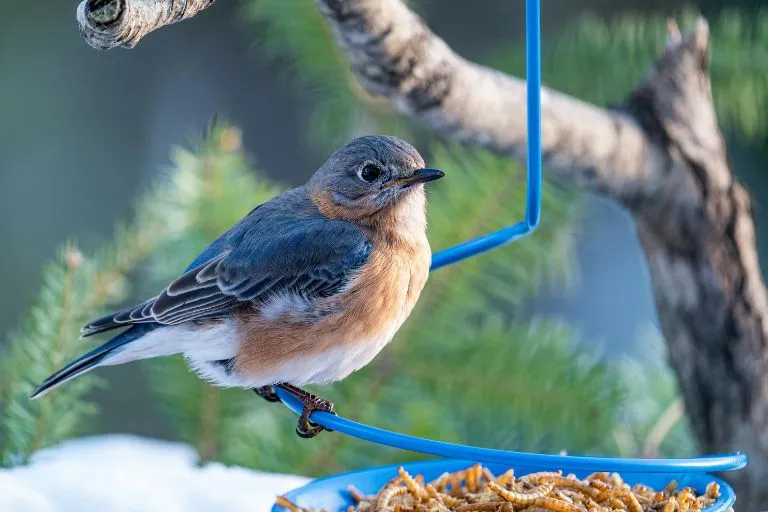
Attracting bluebirds to your yard starts with the right feeder. A well-designed feeder provides a safe food source. With many options, picking the best one can be tough.
Feeders vary in shape, size, and material. Some are made just for bluebirds, while others attract more species. It’s key to choose one that fits their needs.
• Types of Bluebird Feeders
There are tray, hopper, and tube feeders for bluebirds. Each has its own perks, like easy cleaning and pest resistance. For example, a feeder with a roof keeps birds safe from the weather and predators.
• Optimal Feeder Placement
After picking the right feeder, place it well. Bluebirds like open areas with short grass. Position the feeder where it’s easy to see and at least 3-5 feet off the ground to keep predators away.
• Protecting Feeders from Competitors
Keep your feeder safe from squirrels, raccoons, and other birds. Use feeders with guards or weight-activated perches. Clean and maintain the feeder often to prevent disease and debris.
Common Feeding Mistakes to Avoid
Feeding bluebirds right is key to their health and happiness. It’s important to avoid common mistakes that can harm them. These mistakes include using the wrong food and not keeping feeders clean.
Choosing the wrong food is a big mistake. Bluebirds need insects and fruits. Giving them the right food, like mealworms and berries, helps them stay healthy.
The type of feeder matters too. Bluebirds prefer certain feeders. Using the right one can attract them. Keeping feeders clean is also crucial to prevent diseases.
Knowing these mistakes helps create a better space for bluebirds. It means offering the right food, using the right feeders, and keeping things clean. This way, people can enjoy bluebirds in their backyard without harming them.
Creating a Bluebird-Friendly Habitat
To attract bluebirds to your backyard, you need to create a welcoming space. This means having native plants, water, and shelter. These elements help support the local bluebird population and encourage them to visit.
Native plants are key in attracting bluebirds. They offer berries, insects, and nectar, which are vital for the birds. Plants like dogwood, hawthorn, and cedar are great choices. Adding these to your yard will attract bluebirds.
• Native Plants and Water Sources
Water is also crucial for bluebirds. They need it for drinking and bathing. So, installing a birdbath or small pond is important. Add rocks or twigs to the water for easy landing.
• Natural Shelter Requirements
Bluebirds also need shelter from predators and harsh weather. Trees, shrubs, or brush piles provide this. By offering these shelters, you create a safe space for bluebirds to thrive. Follow these tips to make your backyard a haven for bluebirds.
Conclusion: Nurturing a Healthy Bluebird Population
As we’ve explored, giving the right bluebird food and making a welcoming healthy bluebird population is key. By knowing what bluebirds eat and offering their favorite foods, we help them thrive.
Also, keeping a bluebird-friendly habitat is vital. This includes native plants, water, and shelter. By avoiding common mistakes and creating a supportive space, we help bluebirds in our area.
Remember, small actions in our backyards can greatly help these beloved birds. Let’s keep learning, providing what they need, and help bluebirds soar and flourish for years to come.

